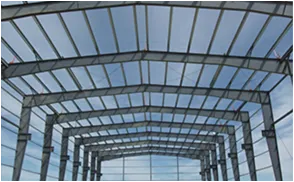- Afrikaans
- Albanian
- Amharic
- Arabic
- Armenian
- Azerbaijani
- Basque
- Belarusian
- Bengali
- Bosnian
- Bulgarian
- Catalan
- Cebuano
- Corsican
- Croatian
- Czech
- Danish
- Dutch
- English
- Esperanto
- Estonian
- Finnish
- French
- Frisian
- Galician
- Georgian
- German
- Greek
- Gujarati
- Haitian Creole
- hausa
- hawaiian
- Hebrew
- Hindi
- Miao
- Hungarian
- Icelandic
- igbo
- Indonesian
- irish
- Italian
- Japanese
- Javanese
- Kannada
- kazakh
- Khmer
- Rwandese
- Korean
- Kurdish
- Kyrgyz
- Lao
- Latin
- Latvian
- Lithuanian
- Luxembourgish
- Macedonian
- Malgashi
- Malay
- Malayalam
- Maltese
- Maori
- Marathi
- Mongolian
- Myanmar
- Nepali
- Norwegian
- Norwegian
- Occitan
- Pashto
- Persian
- Polish
- Portuguese
- Punjabi
- Romanian
- Russian
- Samoan
- Scottish Gaelic
- Serbian
- Sesotho
- Shona
- Sindhi
- Sinhala
- Slovak
- Slovenian
- Somali
- Spanish
- Sundanese
- Swahili
- Swedish
- Tagalog
- Tajik
- Tamil
- Tatar
- Telugu
- Thai
- Turkish
- Turkmen
- Ukrainian
- Urdu
- Uighur
- Uzbek
- Vietnamese
- Welsh
- Bantu
- Yiddish
- Yoruba
- Zulu
Nov . 06, 2024 15:26 Back to list
The Rise of Prefab Steel Warehouses A Modern Solution for Storage Needs
In today’s fast-paced industrial environment, the demand for efficient and reliable storage solutions has never been greater. Businesses are seeking ways to streamline operations, reduce costs, and optimize space utilization. This has led to the growing popularity of prefab steel warehouses as a preferred choice for various industries. This article delves into the advantages, construction process, and applications of prefab steel warehouses that contribute to their increasing adoption.
Understanding Prefab Steel Warehouses
Prefab steel warehouses are pre-engineered structures made primarily from steel components. These warehouses are manufactured in controlled factory environments and then transported to the construction site, where they are assembled. The prefab design is not only efficient but also eco-friendly, as it generates less waste compared to traditional construction methods. The steel used in these structures is often recyclable, aligning with modern sustainability practices.
Advantages of Prefab Steel Warehouses
1. Cost-Effective One of the most significant benefits of prefab steel warehouses is their cost-effectiveness. The streamlined manufacturing process reduces labor costs and minimizes construction time. Additionally, the durability of steel results in lower maintenance costs over the lifespan of the building.
2. Quick Construction Time is a crucial factor for businesses, and prefab steel warehouses can be erected in a fraction of the time it takes to build conventional warehouses. This speed is particularly important for companies needing to expand quickly or respond to changing market demands.
3. Customizable Prefab steel warehouses can be tailored to meet specific requirements, including size, layout, and design features. Business owners can choose various configurations to optimize space utilization for their unique storage needs.
4. Durability and Strength Steel is inherently strong and resistant to various environmental factors, including fire, pests, and extreme weather conditions. This durability ensures that the contents of the warehouse remain safe and secure, reducing the risk of loss.
5. Energy Efficiency Modern prefab steel warehouses can be designed with energy-efficient features, such as insulation systems and natural lighting options. This not only reduces energy costs but also creates a more comfortable working environment.
prefab steel warehouse

6. Sustainability Utilizing steel in construction aligns with sustainable development goals. Steel is one of the most recycled materials globally, and its use can significantly diminish the environmental impact associated with building projects.
The Construction Process
The construction of a prefab steel warehouse involves several key steps. Initially, the design phase includes the identification of the warehouse requirements, such as dimensions and layout, followed by detailed engineering plans. Once the designs are finalized, components are manufactured in a factory setting, ensuring quality control and precision.
After the fabrication is complete, the components are shipped to the construction site, where they are assembled using bolts and other fastening techniques. This assembly process is swift and efficient, often completed within weeks. Once the warehouse is assembled, additional features such as doors, windows, and insulation can be installed according to the specific needs of the business.
Applications Across Industries
Prefab steel warehouses are versatile and serve a wide range of industries, including e-commerce, agriculture, manufacturing, and logistics. In the e-commerce sector, where rapid fulfillment is essential, these warehouses provide the necessary space to store and distribute products efficiently. Similarly, agriculture businesses utilize prefab steel structures for storage of equipment, produce, and livestock housing.
Manufacturers benefit greatly from the expansive floor space and flexibility that prefab steel warehouses offer, allowing them to scale operations as needed. Additionally, logistics companies rely on these structures for warehousing and distribution, ensuring that they can adapt to fluctuating market demands.
Conclusion
As businesses continue to adapt to the challenges of the modern economy, prefab steel warehouses present an attractive solution for efficient storage. Their cost-effectiveness, durability, and quick construction make them a viable option for a variety of industries. With their customizable features and sustainable benefits, prefab steel warehouses are poised to play a crucial role in the future of industrial storage. As companies look to optimize their operations and meet the demands of a changing market, the appeal of prefab steel warehouses will only continue to grow.
-
How Do Prefabricated Steel Structures Transform Modern Construction?
NewsJul.14,2025
-
How Do Prefabricated Metal Buildings Redefine Modern Construction?
NewsJul.14,2025
-
How Do Prefab Insulated Metal Buildings and Steel Structures Revolutionize Modern Construction?
NewsJul.14,2025
-
How Do Pre - Engineered Steel Structures Redefine Modern Construction?
NewsJul.14,2025
-
Advancing Modular Construction with Prefabricated Metal Structures
NewsJul.14,2025
-
Advancing Industrial Infrastructure with Prefabricated Steel Solutions
NewsJul.14,2025
Products categories
Our Latest News
We have a professional design team and an excellent production and construction team.












